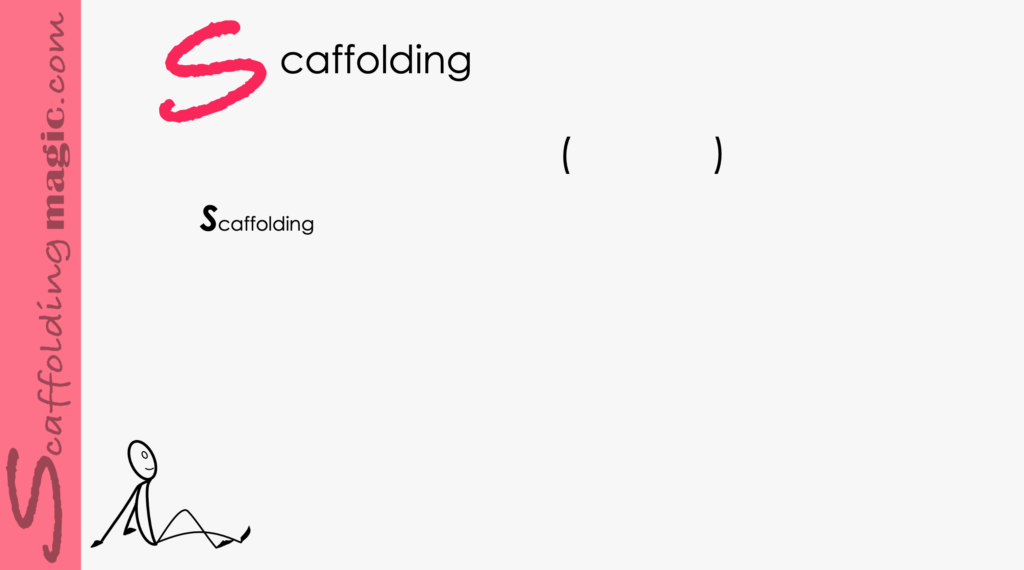You caught a beauty!!!
Download PDF of scaffold here

A popular form of scaffolding is brainstorming or mindmapping, which is a form of assessing students’ past knowledge of any given topic. However, it is far from ideal as it tests students in a public manner, potentially embarrassing them. Further, only one student participates at a time as the interaction ordinarily is that the teacher asks a questions and calls on whichever student raises her or his hand first. Studies have shown that the dynamic brings up the students’ fears of evaluation, of being judged, of appearing foolish in front of their classmates, of making possible linguistic mistakes and/or for sharing ideas that are esoteric and might not be accepted by peers.
Brain Writing is an effective alternative. Less known than mindmapping or brainstorming, brain writing gives students the opportunity to share ideas in a safer setting. Not only does the dynamic relieve students of the anxiety of the public classroom forum in which they have to ‘perform’ , but it raises the quality and quantity of their output so they can more confidently move forward in their learning. The scaffold ends by synthesising information, which promotes acquisition of long-term memory which, in turn, increases the number of synaptic connections in the brain, Ultimately, this increases brain function. Giving the students the time to participate in this dynamic helps them to move the information into longer-term memory and they will begin the upcoming unit with greater chances of overall comprehension.*
You´ll see an example below for a blended arts and literature class. You´ll see how easy it is to adapt to whatever lesson you´re about to begin.
*Doidge, Norman (2007). The Brain that Changes Itself
Step by step:brain writing
BRAIN WRITING: Each member of a group writes a topic on a piece of paper. They each have one minute to write down everything they know about that subject. When the minute is up, they exchange papers and have one minute more to write down everything they know about the new topic. This continues until each group member has addressed each topic.
- Choose 4-6 categories from the unit you’re about to begin (depending on how many groups you have in your class) and write them on the board.
- In groups, students write each of the categories on a separate piece of paper (so that each category is represented once in each group). (Or you can use this template and hand the categories out to each group.)
3. When you give a signal, the students have 60 seconds to write whatever they know about the subject, on the paper in front of them.
4. After 60 seconds, you signal them to pass their piece of paper to their classmate on the left. They then have 60 seconds more to add whatever they know about the new subject they’ve been given beneath what has already been written.
5. This dynamic continues until the papers have been passed to each student once and all group members have added to each category.
6. Group members synthesise the information from each category into 1-2 sentences.
7. Formative Assessment: Students in each group share their conclusions. In turns, each group gives respectful and useful comments on each group´s conclusions – whether they might be missing essential information or whether they have included factors that don’t belong.
8. Reflection: Students write 200-250 words on the dynamic of the activity. Indicate whether they felt more comfortable taking chances with what they might know about the new material in this format, compared to other ways of introducing topics.
[You’ll find a more complete explanation of this lesson in the Videos section (CLIL Scaffolding 7), or click on the thumbnail below to watch.]

Scaffold in WordScaffold in PDFTemplate
.


Scaffoldingmagic.com is your entryway into DYNAMIC bilingual learning methodologies, such as Phenomenon-Based Learning, CLIL, EMI, and ESL. You’ll find ways to implement critical thinking tools (DOK) to promote higher level thinking, the growth mindset, instill an ethic of excellence, deep reflection on learning, and all through multi-cultural, interdisciplinary activities. We have the keys to turning competences into action and to creating collective efficacy in your school so you move ahead as a unified, enthusiastic team.



